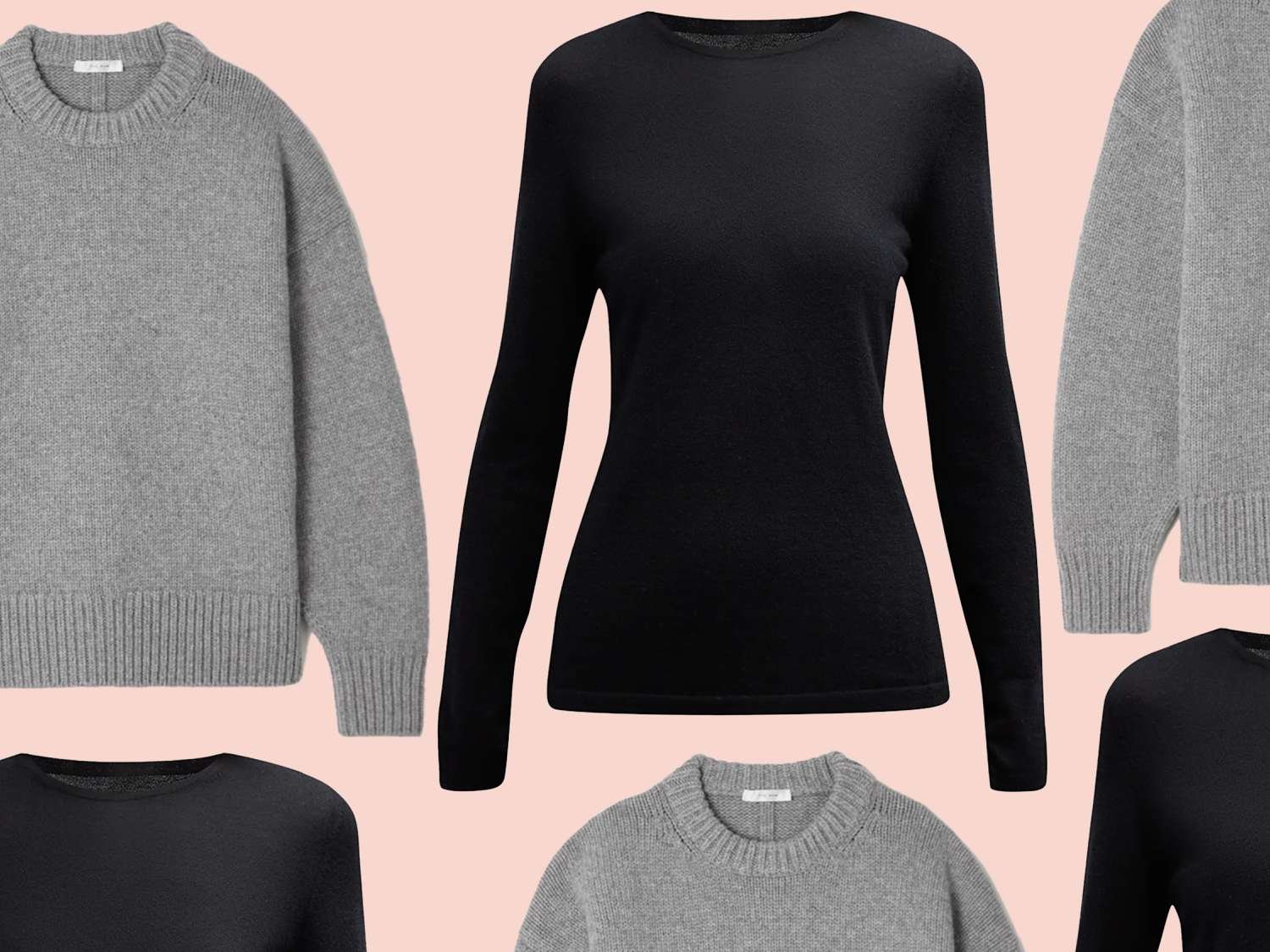
Cashmere sweaters have long been associated with luxury, comfort, and style. Made from the soft undercoat of cashmere goats, these sweaters are celebrated for their Seasons lightweight warmth, extraordinary softness, and elegant drape. Whether you are a fashion enthusiast or simply looking for the best in comfort and quality, cashmere sweaters represent the pinnacle of knitwear. This comprehensive guide delves into everything you need to know about cashmere sweaters, from their origins and production processes to care tips, styling advice, and the benefits of investing in this luxurious material.

What is Cashmere?
Origins and History
Cashmere wool comes from the fine, soft undercoat of cashmere goats, primarily found in regions such as Mongolia, China, India, and Iran. The name “cashmere” comes from the old spelling of Kashmir, a region in the Himalayas where people have traditionally woven the fabric for centuries. People have used cashmere for thousands of years, with historical references showing that royalty and nobility favored it due to its exceptional qualities. The popularity of cashmere spread to Europe in the 18th and 19th centuries, where it quickly became a symbol of luxury and refinement.
The Cashmere Goat
Cashmere goats produce two types of hair: a coarse outer layer and a soft, fine undercoat. It is this undercoat that provides the luxurious cashmere fiber. These goats have adapted to harsh climates, with temperatures often dropping to -30 degrees Celsius (-22 degrees Fahrenheit), which is why their undercoat is so soft and insulating. Cashmere goats are typically combed by hand during the molting season, which yields the fine, soft fibers needed for cashmere production.
How Cashmere Sweaters Are Made
The Collection Process
The process of obtaining cashmere wool begins with the annual molting season in the spring. During this time, cashmere goats naturally shed their winter undercoats. Traditionally, herders comb the goats by hand to collect the soft undercoat, a method that minimizes stress on the animals and ensures the fibers are collected efficiently. This meticulous process produces a relatively small amount of cashmere fiber per goat—only about 150-200 grams (5-7 ounces) annually—making cashmere a rare and valuable commodity.
Sorting and Cleaning
After collection, the raw cashmere fibers undergo a meticulous sorting process. The process involves separating the finer, softer undercoat fibers from the coarser guard hairs. Then, the fine fibers are carefully cleaned to remove dirt, grease, and other impurities, ensuring the delicate nature of cashmere fibers is preserved.
Spinning and Dyeing
Once cleaned, the cashmere fibers are carded and spun into yarn. This process aligns the fibers and twists them into a smooth, continuous strand. To ensure durability and minimize pilling, manufacturers spin high-quality cashmere yarns tightly. After spinning, they can dye the yarns in a wide variety of colors using either natural or synthetic dyes, depending on the desired final product..
Knitting
After dyeing the yarn, manufacturers use it to knit cashmere sweaters. They can knit the sweaters either by hand or with a machine, with hand-knitted sweaters often being more intricate and time-consuming to produce. They craft cashmere sweaters in various styles, including pullovers, cardigans, turtlenecks, and V-necks, catering to a wide range of fashion preferences.
The Unique Qualities of Cashmere
Softness and Comfort
Cashmere is renowned for its softness, making it incredibly comfortable to wear. The fibers are finer and smoother than wool, resulting in a fabric that feels luxurious against the skin. This softness is one of the primary reasons why cashmere sweaters are highly sought after.
Warmth and Insulation
Despite being lightweight, cashmere provides Seasons excellent insulation. The fibers trap air, creating a natural barrier that retains body heat while allowing moisture to escape. This unique combination makes cashmere sweaters ideal for keeping warm in cold weather without the bulk associated with other winter garments.
Durability
With proper care, cashmere is surprisingly durable. Seasons High-quality cashmere fibers can maintain their softness and appearance for many years. Cashmere sweaters are less prone to wrinkling and can resist pilling if spun tightly and cared for properly.
Breathability
Cashmere’s natural breathability sets it apart from synthetic materials. It helps regulate body temperature, keeping you warm in the winter and cool in the spring and fall.Seasons This versatility makes cashmere sweaters a practical and stylish choice for year-round wear.
How to Choose a High-Quality Cashmere Sweater
Checking the Label
When purchasing a cashmere sweater, always check the label for information about fiber content. A label that states “100% cashmere” ensures that the garment is made entirely from cashmere fibers. Be wary of labels that mention cashmere blends, as these may contain other, less luxurious materials.
Feel the Fabric
High-quality cashmere feels soft and smooth to the touch. Seasons Gently rub the fabric against your skin to assess its softness. The texture should be consistent and free from roughness or itchiness. A quality cashmere sweater should also feel substantial, not too light or flimsy.
Assessing Ply and Knit
Cashmere yarn is available in different ply levels, which refer to the number of yarn strands twisted together. Single-ply cashmere is lightweight and delicate, while two-ply or higher cashmere is thicker and more durable. The knit should be even and tight, with no visible gaps or irregularities.
Check for Pilling
Pilling occurs when short fibers break loose and form small balls on the fabric’s surface. While some pilling is natural, especially with lower-quality cashmere, high-quality cashmere should resist pilling. Run your hands over the sweater to see if it sheds or pills easily.Seasons
Price and Brand Reputation
Cashmere is an investment, and high-quality Seasons cashmere sweaters come with a higher price tag. Research reputable brands known for their cashmere products and read reviews to ensure you are purchasing a sweater that offers good value for money.
Caring for Your Cashmere Sweater
Washing Tips
Hand Wash: Cashmere sweaters should be Seasons washed by hand to maintain their softness and shape. Use lukewarm water and a mild detergent specifically designed for delicate fabrics. Gently soak the sweater for a few minutes, then rinse thoroughly with clean water.
Machine Wash: If you prefer to use a washing machine, place the sweater in a mesh laundry bag and use the delicate or wool cycle with cold water. Use a mild detergent and Seasons avoid using fabric softeners, as they can damage the fibers.
Avoid Hot Water: Never use hot water to wash cashmere, as it can cause Seasons the fibers to shrink and lose their shape.
Drying Techniques
Lay Flat to Dry: After washing, gently squeeze out excess water without Seasons wringing or twisting the sweater. Lay it flat on a clean, dry towel and reshape it to its original dimensions. Allow the sweater to air dry away from direct sunlight and heat sources.
Avoid Hanging:Never hang a cashmere sweater to dry, as this can cause it to stretch and lose its shape. Hanging can also lead to unsightly hanger marks on the shoulders.
Storing Cashmere
Fold, Don’t Hang: Always fold cashmere sweaters to avoid stretching. Store them in a drawer or on a shelf in a cool, dry place.
Use Storage Bags: If storing cashmere for an extended period, consider using breathable storage bags to protect the fibers from dust and moths. Cedar blocks or lavender sachets can be added to deter moths naturally.
Avoid Plastic Bags: Plastic bags can trap moisture and cause mildew or mold growth. Instead, opt for cotton or canvas storage bags that allow air circulation.
Handling Pilling
Remove Pills Gently: Use a cashmere comb or a fabric shaver to remove any pills that form on the sweater’s surface. Be gentle to avoid damaging the fibers. Regularly de-pilling your cashmere will help maintain its smooth appearance.
Preventing Pilling: Avoid wearing your cashmere sweater with rough-textured clothing or accessories that may cause friction. Proper care and storage will also reduce the likelihood of pilling.
Styling Cashmere Sweaters
Classic Elegance
Cashmere sweaters are timeless classics that can be effortlessly styled for a sophisticated look. Pair a solid-colored cashmere sweater with tailored trousers or a pencil skirt for a polished, professional appearance. Neutral shades like black, navy, gray, and beige are versatile and can be accessorized with statement jewelry for added elegance.
Casual Chic
For a more relaxed look, cashmere sweaters can be worn with jeans or leggings. Opt for a slouchy or oversized cashmere sweater for a cozy, casual vibe. Layering with a cashmere cardigan over a simple t-shirt or blouse adds both warmth and style. Complete the outfit with ankle boots or sneakers for a comfortable yet chic ensemble.
Seasonal Styling
Winter:In colder months, cashmere sweaters can be layered under coats or jackets for added insulation. Turtleneck cashmere sweaters provide extra warmth and look stylish when paired with wool trousers and boots.
Spring and Fall: Cashmere’s breathability makes it ideal for transitional . A lightweight cashmere sweater can be worn alone or layered over a collared shirt. Pair with chinos or a skirt for a versatile spring or fall look.
Summer: On cool summer evenings, a cashmere sweater can be draped over the shoulders or worn with shorts and sandals. Opt for lighter colors and weights to match the season’s vibe.
Evening Wear
Cashmere sweaters are not just for daywear; they can be dressed up for evening occasions as well. A fitted cashmere sweater in a rich, jewel-toned color can be paired with



